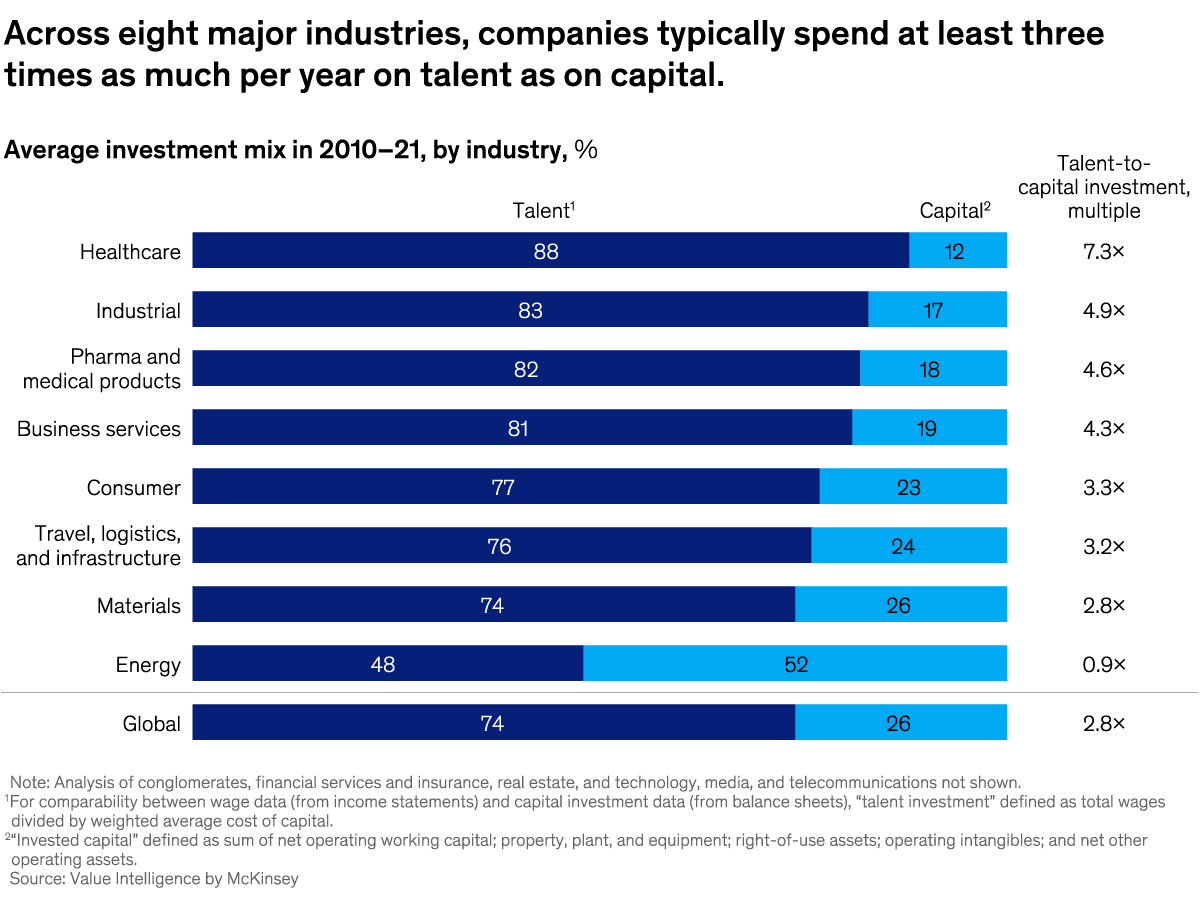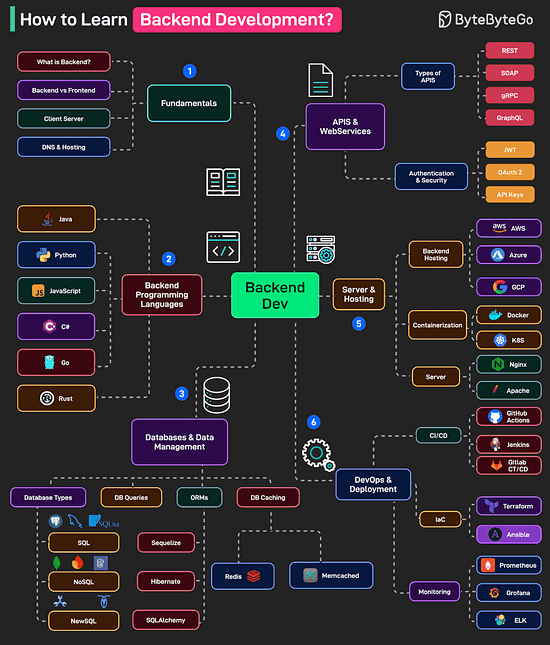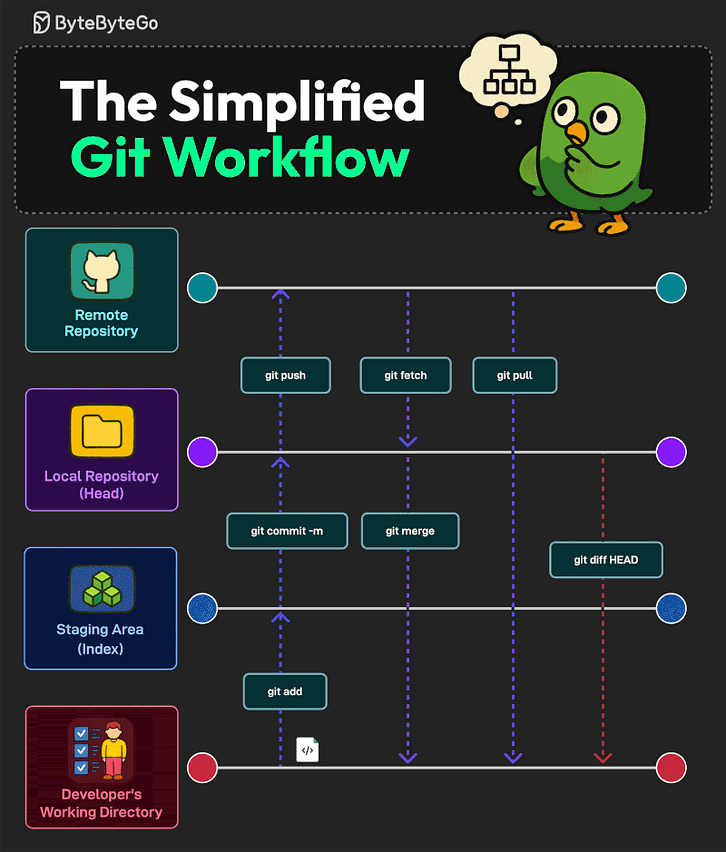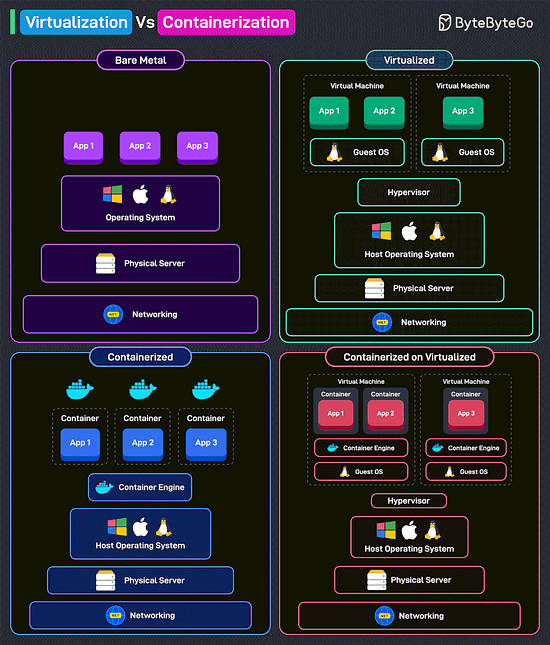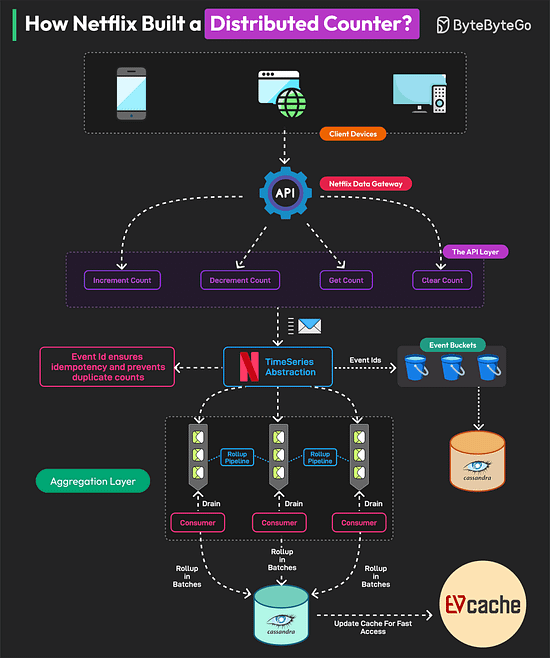Archives
- By thread 5226
-
By date
- June 2021 10
- July 2021 6
- August 2021 20
- September 2021 21
- October 2021 48
- November 2021 40
- December 2021 23
- January 2022 46
- February 2022 80
- March 2022 109
- April 2022 100
- May 2022 97
- June 2022 105
- July 2022 82
- August 2022 95
- September 2022 103
- October 2022 117
- November 2022 115
- December 2022 102
- January 2023 88
- February 2023 90
- March 2023 116
- April 2023 97
- May 2023 159
- June 2023 145
- July 2023 120
- August 2023 90
- September 2023 102
- October 2023 106
- November 2023 100
- December 2023 74
- January 2024 75
- February 2024 75
- March 2024 78
- April 2024 74
- May 2024 108
- June 2024 98
- July 2024 116
- August 2024 134
- September 2024 130
- October 2024 141
- November 2024 171
- December 2024 115
- January 2025 216
- February 2025 140
- March 2025 220
- April 2025 233
- May 2025 239
- June 2025 303
- July 2025 38
-
Innovative Gas Solutions for Your Business Needs
Dear info
I hope this message finds you well. I am reaching out on behalf of Chengdu TCWY New Energy Technology Co., Ltd., a leader in providing cutting-edge solutions that prioritize reduced investment, lower consumption, and increased reliability.
Our comprehensive range of solutions includes:
• Hydrogen Plants: PSA-H2 Plant, NG SMR hydrogen plant, and methanol steam reforming plant.
• Oxygen Plants: VPSA-O2 and PSA-O2 plants, designed for high efficiency.
• H2S Removal Plant
• CO2 Recovery Plant
• CO2 Removal Plant
• Catalysts and adsorbents
We are confident that our technologies will not only help reduce operational costs but also significantly improve overall system reliability. Our team is committed to offering tailored solutions that align with your unique requirements.We would appreciate the opportunity to discuss how our innovations can benefit your business.
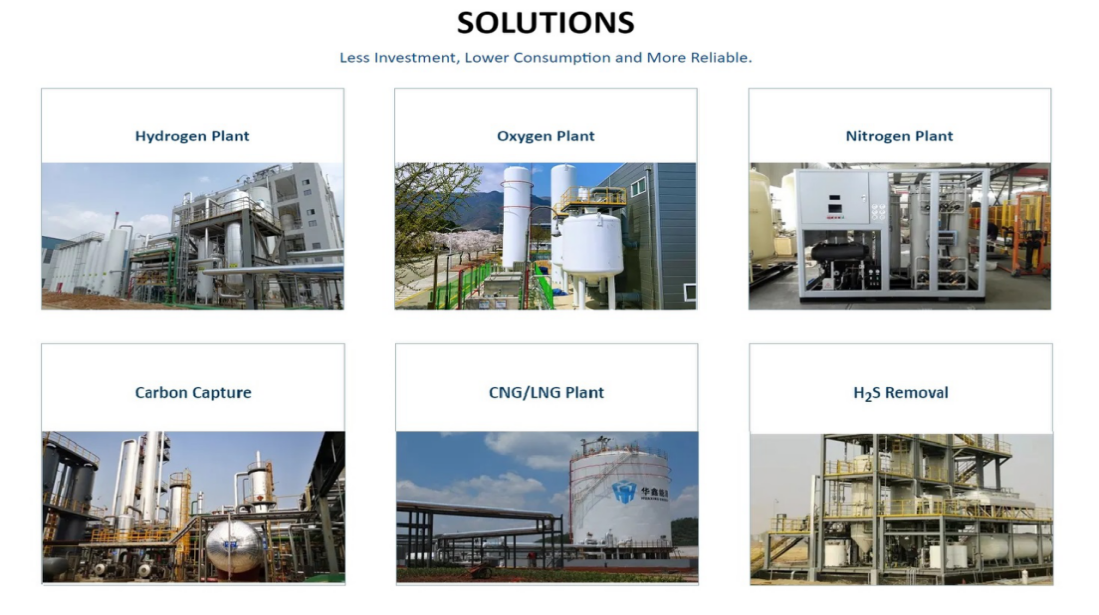
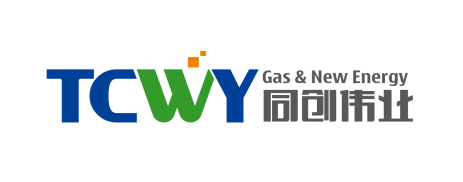
Molly
IBD Overseas Marketing Manager
E: molly@gaspurify.com
Phone/whatsapp/Wechat: +86-18515708565
Web: www.gaspurify.com
by "service07" <service07@tcwynewenergy.com> - 04:04 - 6 Apr 2025 -
Efficient cargo transportation solutions to help your business grow!
Hi dear,
Good day.
This is Mandy from Paramount Logistics (Shenzhen) Co., Ltd.
We get your information from Google, we can ship goods from China to Philippines by both air express (DHL UPS Fedex.) or Air special line DDP, Sea (FCL LCL to Port) Sea DDP to door, we have been in this line for more than 10 years, different weight shipping cost is different; Below is cost for your reference:
UPS: USD2.68/kg by UPS for common goods, 6-7working days
Air DDP : USD4.86/kg for over 100kgs common to our Manila warehouse, 2-3 working days, USD7.86/KG for battery goods over 100kgs goods with batteries: , 4-6 working days;
Sea DDP : USD189/CBM by sea DDP for common goods, USD313/CBM for battery ;12-15 working days after sailing ; (MOQ is 1CBM, if less than 1CBM, shipping cost will be count as per 1CBM), both air and sea DDP is to our manila warehouse with custom clearance and custom duty included, but cannot supply you any documents like BL or duty BL;

Any inquiry for shipping cost, pls let us know;
Best Regards,
Mandy
Paramount Logistics (Shenzhen) Co.,Ltd
Add:1002#A Block,HuaYi building ,No.9 Pingji Road ,Nanwan Street,Longgang District , Shenzhen, Guangdong, China (Mainland)
TEL:0755-84594989 Fax :0755-89208448
Mobile :+8615360166019 (Whatsapp&Wechat)
E-mail: zswl@paramtlogistics.comWebsite: https://www.paramtlogistics.com/
by "sale11" <sale11@zswlship.com> - 12:31 - 6 Apr 2025 -
Butterfly valve manufacturer from Tianjin China
Dear Boss,
We are butterfly valve manufacturer in Tianjin, China. We can not say we are the best resilient seated butterfly valve manufacturer in China, but we are one of them.
We have products lines:
Concentric type: wafer type from DN25 to DN1200, lug type from DN25 to DN1600.
Double flange type from DN40 to DN2400.
U section type from DN40 to DN2000.
Fully PTFE lined butterfly valve from DN50 to DN800.
Double eccentric butterfly valve series 13 and 14 from DN50 to DN1600.
High performance butterfly valve from DN50 to DN600.
We have a large stock of roughcast, which can offer customers a faster delivery time.
Best Regards,
Stone Lau
Sales Manager
Tianjin Triones Valve Co.,LTD
No.2 Shengde Road, Guaizigou Industrial Park, Xiaozhan Town, Tianjin, China
Mobile: +8616622385736
Web: www.trionesflow.com
by "Bulaw Haleem" <haleembulaw@gmail.com> - 10:19 - 5 Apr 2025 -
Turnkey Solutions for Custom Light Pole Manufacturing!
Dear info,
I wish you all the best.
We are a professional custom light pole manufacturing team with graphic design, CAD drawing, 3D design, wind resistance calculation, earthquake resistance calculation, etc.
Our factory has professional equipment such as 12000W laser cutting machines, 1600T CNC bending machines, welding robots, galvanizing pools, automatic catenary spray booths, etc.
With an annual production capacity of 200,000 units, we can provide you with turnkey solutions.
We have rich experience and professional capabilities to provide better cost optimization and service work.
Thank you for your time!
Best Wishes,
Nesta
Sales Manager
Yangzhou Tianxiang Road Lamp Equipment Co., Ltd.
+86 18852751380
nesta@txlightinggroup.com
https://www.txledlighting.com/
by "sales19" <sales19@txstreetlight.com> - 10:01 - 5 Apr 2025 -
Discover Eye-Friendly E Ink Tablets for Education with Geniatech
Dear info,
Are you seeking an eye-friendly solution for your educational environment? Geniatech’s E Ink tablets offer a paper-like writing and reading experience, with long-lasting battery life designed to protect students’ and teachers’ eyes during extended use.
Why Choose Geniatech?
・Source Factory: Competitive pricing with full production control for bulk orders.
・Comprehensive Product Line: Cutting-edge technologies, including the latest Spectra 6 color e-ink.
・In-House R&D: Free engineering support for customized educational solutions.
・One-Stop Customization: OEM/ODM services with an open-source Android system for flexible adaptation.
Let’s discuss how Geniatech’s E Ink tablets can help streamline your educational needs with our advanced technology.
Best regards,
Geniatech Team

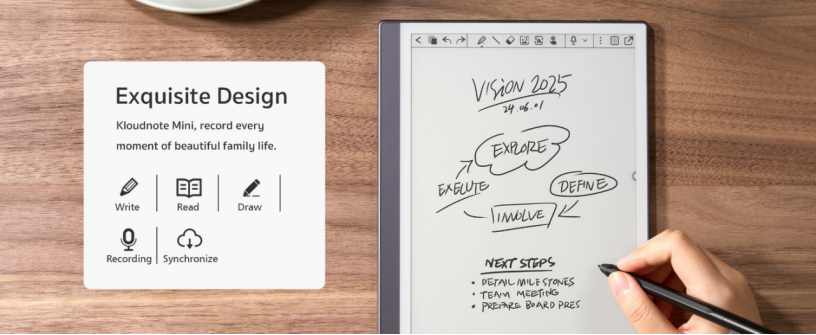
by "VANELLY Mochnacz" <mochnaczvanelly40@gmail.com> - 05:55 - 5 Apr 2025 -
Car refrigerator,truck air conditioner,rv air conditioner manufacture from Colku
Hi, infoGood day!This is Evelyn from Colku company,nice to meet you.(Foshan Sanshui Colku Electrical Appliance Ltd. Guangdong,China).We are professional manufacture who focus on mobile refrigeration field with more than 23+ years experience,also a reliable supplier of world-famous automotive products brands, including:
ARB in Australia, Milenco in the UK, TRUMA and REIMO from Germany,Narbonne Accessories from France and so on.
as for certification,we have factory ISO9001 and IATF16949 qualified, products CE, C-Tick,SAA.Our main products including all kinds of car refrigerators,parking air conditioners, RV air conditioners, camping air conditioners,camping refrigerators and customized fridges for new energy vehicle.which are widely used in cars, yachts, truck, outdoor camping and also at home.Our company has 32000 square meters, and total 4 work shop buildings.
Colku was established in 1989,located in Foshan City. And in the past 23 years, Colku has become the top OEM/ODM manufacturer of truck air conditioners and portable refrigerators.
I have sent you our latest products catalogs by attachment,and my business card is as below,kindly check.
Looking for your further feedback.

 Best wishesEvelyn Li
Best wishesEvelyn Li Contact
Contact
Mail:evelyn@colku.cn
Whatsapp: +86_13246255187
Tel/Wechat:+86_13246255187
Add: NO.84,Area B,Sanshui Central Technology Industry Park,Leping,Sanshui Dist.,Foshan City,Guangdong China,528137
www.colku.comRIUIvtGtoEzvCilHxfYFGbYW
by "manager001" <manager001@fscolku.com> - 03:19 - 5 Apr 2025 -
The week in charts
The Week in Charts
Talent investment, AI’s automation potential, and more Share these insights
Did you enjoy this newsletter? Forward it to colleagues and friends so they can subscribe too. Was this issue forwarded to you? Sign up for it and sample our 40+ other free email subscriptions here.
This email contains information about McKinsey's research, insights, services, or events. By opening our emails or clicking on links, you agree to our use of cookies and web tracking technology. For more information on how we use and protect your information, please review our privacy policy.
You received this email because you subscribed to The Week in Charts newsletter.
Copyright © 2025 | McKinsey & Company, 3 World Trade Center, 175 Greenwich Street, New York, NY 10007
by "McKinsey Week in Charts" <publishing@email.mckinsey.com> - 03:08 - 5 Apr 2025 -
Hi, this is Sally Lin from Shantou Yudong packaging
Hi info,
Good day !
【New designs are waiting for you】
This is Sally Lin from Yudong Packaging,a OEM/ODM cosmestics packaging manufacturer in China.We just developed some new designs with new material,would you like to get more information about them?All of our prodcut sare coming with certifications.Would you like to get our newdesigns catalog?Yours Sally Lin
Shantou Yudong Packaging Products Co.,ltd
E-mail : sally@styudong.com
WhatsApp /Wechat: +86-13592884136
Website: www.styudong.com
by "Fatxi Ola" <fatxiola688@gmail.com> - 02:38 - 5 Apr 2025 -
Boost Your Production Efficiency with Our BLDC & AC Motor Solutions
Dear manager,
I'm with Guangdong Zongqi Automation Co.,Ltd, specializing in BLDC and AC motor production equipment. We offer solutions designed to improve production efficiency and quality.
If you’re interested in exploring how we can support your business, please get in touch.
Best regards,
Joyce
ManagerPhone: 0086 17786822866
WhatsApp:+86 18898401103
Email: joyceluo2024@zongqi-auto.cn
Official Website:https://www.zongqiauto.com/
by "Merle Isaac" <mariana83542@gmail.com> - 02:30 - 5 Apr 2025 -
Unlocking value with gen AI
Plus, trends in sporting goods
by "McKinsey Highlights" <publishing@email.mckinsey.com> - 11:50 - 5 Apr 2025 -
EP157: How to Learn Backend Development?
EP157: How to Learn Backend Development?
Backend Development requires knowledge of multiple aspects. Here’s a mind map of what all things a developer should learn:͏ ͏ ͏ ͏ ͏ ͏ ͏ ͏ ͏ ͏ ͏ ͏ ͏ ͏ ͏ ͏ ͏ ͏ ͏ ͏ ͏ ͏ ͏ ͏ ͏ ͏ ͏ ͏ ͏ ͏ ͏ ͏ ͏ ͏ ͏ ͏ ͏ ͏ ͏ ͏ ͏ ͏ ͏ ͏ ͏ ͏ ͏ ͏ ͏ ͏ ͏ ͏ ͏ ͏ ͏ ͏ ͏ ͏ ͏ ͏ ͏ ͏ ͏ ͏ ͏ ͏ ͏ ͏ ͏ ͏ ͏ ͏ ͏ ͏ ͏ ͏ ͏ ͏ ͏ ͏ ͏ ͏ ͏ ͏ ͏ ͏ ͏ ͏ ͏ ͏ ͏ ͏ ͏ ͏ ͏ ͏ ͏ ͏ ͏ ͏ ͏ ͏ ͏ ͏ ͏ ͏ ͏ ͏ ͏ ͏ ͏ ͏ ͏ ͏ ͏ ͏ ͏ ͏ ͏ ͏ ͏ ͏ ͏ ͏ ͏ ͏ ͏ ͏ ͏ ͏ ͏ ͏ ͏ ͏ ͏ ͏ ͏ ͏ ͏ ͏ ͏ ͏ ͏ ͏ ͏ ͏ ͏ ͏ ͏ ͏ ͏ ͏ ͏ ͏ ͏ ͏ ͏ ͏ ͏ ͏ ͏ ͏ ͏ ͏ ͏ ͏ ͏ ͏ ͏ ͏ ͏ ͏ ͏ ͏ ͏ ͏ ͏ ͏ ͏ ͏ ͏ ͏ ͏ ͏ ͏ ͏ ͏ ͏ ͏ ͏ ͏ ͏ ͏ ͏ ͏ ͏ ͏ ͏ ͏ ͏ Forwarded this email? Subscribe here for moreWorkOS Radar: Smarter protection with device fingerprinting (Sponsored)
WorkOS Radar leverages advanced device fingerprinting to protect your platform from fraudulent activity, including fake signups, throwaway emails, and brute-force attacks.
With WorkOS Radar, you can:
Identify and challenge suspicious activity before it impacts your platform
Prevent free-tier abuse and fraudulent access with precision detection
Tailor threat detection and mitigation to fit your app’s exact needs
Stay ahead of evolving threats and uphold privacy standards with WorkOS Radar’s cutting-edge security solution.
This week’s system design refresher:
Why Everyone’s Talking About MCP? (Youtube video)
How to Learn Backend Development?
A Simplified Git Workflow
Virtualization vs Containerization
How Netflix Built a Distributed Counter?
SPONSOR US
Why Everyone’s Talking About MCP?
How to Learn Backend Development?
Backend Development requires knowledge of multiple aspects. Here’s a mind map of what all things a developer should learn:
Fundamentals
This includes topics like backend vs frontend, client-server, DNS, etc.Backend Programming Languages
Choose between one or more programming languages like Java, Python, JS, Go, Rust, and C#.Databases
This includes topics like types of databases such as SQL (Postgres, MySQL, SQLite), NoSQL (MongoDB, Firebase, DynamoDB), NewSQL (CockroachDB, Spanner). Other topics include working with ORMs and Database Caching.APIs and Web Services
Learn about API types (REST, GraphQL, gRPC, SOAP) and authentication techniques (like JWT, OAuth 2, API keys).Server and Hosting
This involves topics like backend hosting services (AWS, Azure, GCP), Containerization using Docker & Kubernetes, and Server Setup for Nginx, Apache, etc.DevOps
Learn about CI/CD Pipelines using GitHub Actions and Jenkins, IaC (Terraform, Ansible) and Monitoring with tools like Prometheus, Grafana, ELK.
Over to you: What else will you add to the list for learning backend development?
A Simplified Git Workflow
Learning Git is one of the fundamental skills for every developer out there. Here are the steps within a simple and basic Git workflow.
Developer’s Working Directory (Untracked) to Staging Area (Index)
The command for the same is “git add”. The files go from untracked to staged.Staging Area to Local Repository (Head)
The command for this move is “git commit -m “message””. It saves changes to the local repository (HEAD), marking a version history.Local Repository to Remote Repository (Remote)
The command for this move is “git push”. It uploads the committed changes to the remote repository (such as on GitHub) for collaboration.Remote Repository to Local Repository
The commands “git pull” and “git fetch” help with this. “git pull” updates local files with remote changes. On the other hand, “git fetch” retrieves remote changes but does not merge them. The command “git merge” combines changes from different branches.Checking the Differences
The command “git diff HEAD” shows the differences between the developer's working directory and the latest commit.
Over to you: Which other step do you follow in your Git workflow?
Virtualization vs Containerization
Virtualization creates multiple VMs on a single physical server, each with its operating system, using a hypervisor.
Containerization is a lightweight virtualization method that runs applications in isolated environments (containers) sharing the same operating system.
Let’s look at the different possibilities in more detail.Bare Metal: Applications run directly on the operating system. No virtualization or containerization is used. It provides high performance but lacks flexibility.
Virtualized: Uses a hypervisor to create VMs. Each VM has its guest OS, making it heavier on resources. Provides strong isolation but adds overhead.
Containerized: Uses a container engine instead of a hypervisor. Containers share the host operating system, making them lightweight and efficient. It is faster and more scalable than VMs.
Containerized on Virtualized: Runs containers inside VMs. Provides both flexibility and isolation, common in hybrid cloud environments. It balances resource efficiency with security.
Over to you: Have you used VMs and Containers to deploy workloads?
How Netflix Built a Distributed Counter?
A Distributed Counter is a system where the responsibility of counting events is spread across multiple servers or nodes in a network. Netflix needs to track and measure multiple user interactions to make real-time decisions and optimize its infrastructure.
For this reason, they built a Distributed Counter Abstraction.
Netflix’s Distributed Counter Abstraction operates in four main layers, ensuring high performance, scalability, and eventual consistency.
Client API Layer
Users interact with the system by sending AddCount, GetCount, or ClearCount requests. The Netflix Data Gateway efficiently processes and routes these requests.Event Logging and TimeSeries Storage
Events are stored in Netflix TimeSeries Abstraction for scalability. Each event is tagged with an Event ID to ensure idempotency. To avoid database contention, events are grouped into time partitions known as buckets. Data is stored in Cassandra.Rollup Pipeline or Aggregation
Rollup Queues collect event changes and process them in batches. Aggregation occurs in immutable time windows, ensuring accurate rollup calculations. Data is stored in the Cassandra Rollup Store for eventual consistency.Read Optimization (Cache & Query Handling)
Aggregated counter values are cached in EVCache for ultra-fast reads. If a cache value is stale, a background rollup refresh updates it. This model allows Netflix to process 75K requests per second with single-digit millisecond latency.
Reference: Netflix’s Distributed Counter Abstraction
SPONSOR US
Get your product in front of more than 1,000,000 tech professionals.
Our newsletter puts your products and services directly in front of an audience that matters - hundreds of thousands of engineering leaders and senior engineers - who have influence over significant tech decisions and big purchases.
Space Fills Up Fast - Reserve Today
Ad spots typically sell out about 4 weeks in advance. To ensure your ad reaches this influential audience, reserve your space now by emailing sponsorship@bytebytego.com.
Like
Comment
Restack
© 2025 ByteByteGo
548 Market Street PMB 72296, San Francisco, CA 94104
Unsubscribe
by "ByteByteGo" <bytebytego@substack.com> - 11:36 - 5 Apr 2025 -
Response: Inquiry About Products
Dear [openbravo and Odoo Systems],Thank you for your interest in our products.We received an email from an address with your company's name requesting the company brochure. Before proceeding with sending the brochure, we would like to confirm whether this email is indeed from your company. Kindly confirm this at your earliest convenience.If the email is confirmed to be from your company, please note that the brochure is attached to this message. If you have any other questions or need further information, feel free to reach out.We look forward to working with you!
Yours Sincerely,
Egypt Mineral Ores [E.M.O.] - Information Department46, Moharam Bek St. – Moharam Bek – Alexandria Governorate Mobile: +2015-5744-1470
ElMaram Tower 1St, Floor - Office # 12 Telephone: +203-497-2978
Postal Code / ZIP Code #21511 Fax: +203-497-2978
https://www.emomineral.com E-mail: export@emomineral.com E-mail: info@emomineral.com
by "info@emomineral.com" <info@emomineral.com> - 05:43 - 5 Apr 2025 -
Limited Availability: Secure Your Financial Plan & VIP Golf Access
Strategies designed specifically for your financial goals... Hello Sir/Madam,
At Fairway Wealth Partners, we pride ourselves on personalised, high-quality service. To maintain this level of care, we limit the number of clients we serve at any one time - ensuring immediate access to:
- Exclusive Golf Experiences: VIP invites and tee times at some of the UK’s most prestigious courses.
- Tailored Investment Advice: Strategies designed specifically for your financial goals.
- Valuable Networking: Opportunities to connect with like-minded enthusiasts on the green.
Spaces are limited, and we’d love for you to be among our select clients. If you’re interested, now is the time to act.
Click here or reply to this email to book your spot. Don’t miss out on a world-class blend of financial expertise and golfing prestige.
Best regards,
Richard Ellis
Project Director
+44(0)7380 337 315
+44(0)1924 975 502
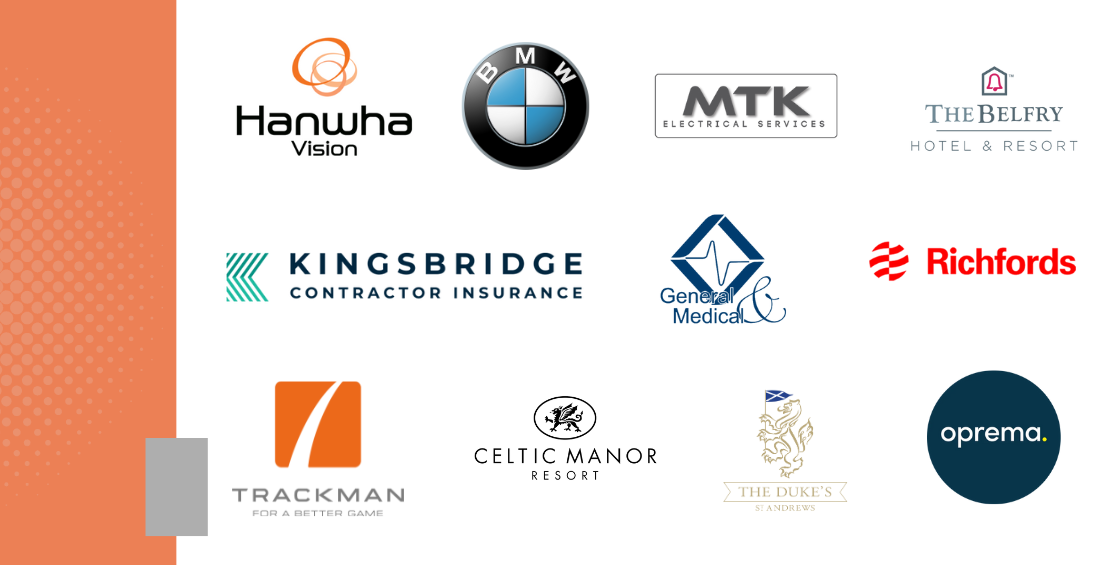

by "Richard - Fairway Wealth Partners" <info@fairwaywealthpartners.com> - 03:17 - 5 Apr 2025 -
Enhance Operational Efficiency with Shen Gong’s Certified Industrial Knives
Dear info,
I am Lmar Kiitty from Sichuan Shen Gong Carbide Knives Co., Ltd., the world’s largest manufacturer of carbide knives and blades since 1998. With ISO9001 certification and a track record as a trusted OEM partner, we provide a diverse range of high-performance industrial knives designed to improve operational efficiency.
Our product offerings include:
· Corrugated Slitter Scorer Knives
· Coil Slitting Knives, Razor Blades, Guillotine Knives
· Pelletizing and Granulator Knives
· Custom Solutions for Precision Cutting Needs
Shen Gong combines carbide material technology with manufacturing expertise to deliver durable, high-quality products that reduce maintenance and enhance productivity. Please let us know if you’d like more information or a customized solution tailored to your needs.

Warm Regards,
Lmar Kiitty
Overseas Sales Manager
Sichuan Shen Gong Carbide Knives Co., Ltd.
by "Lmar Kiitty" <kiittylmar709@gmail.com> - 05:38 - 4 Apr 2025 -
Collaborate with a Leading Industrial PC Manufacturer in China
Dear info,
My name is Robin Chen, and I am reaching out from APQ, a leading industrial PC manufacturer in China.
Ranked among the top three in our industry, we pride ourselves on our strong R&D capabilities, robust production systems, and effective sales channels.
We are currently looking to build partnerships with valued companies aboard. On our website: www.apuqi.net, you will find our company introduction and product catalog for your consideration.
Please feel free to reach out if you would like to explore opportunities to work together.
Best Regards!
Robin Chen
Overseas Operations
MobileCN/WhatsApp:+86 183-5162-8738
Website: www.apuqi.net
by "marketing" <marketing@apqtech.cn> - 03:16 - 4 Apr 2025 -
🚨LAST CHANCE! Will I see you in the masterclass?? 🚨
You should hop on the ‘52 Funnels’ I’m hosting with my good friends Paul Counts, Shreya Banerjee.I know you “say” you’re busy…
But do you have 60 minutes… to change your life forever and finally have an online business that could set you financially free???
If so, you should hop on the live FREE Masterclass I’m hosting with my good friends Paul Counts, Shreya Banerjee.
If you’ve missed my emails up til now…
We’re gonna reveal a BUNCH of ready-to-launch funnels we pre-built for you.
As well as the sales page, upsell flow, email follow ups, everything…
Even the products!
So go save your spot because they are filling up fast, and I’m not sure when we’re going to offer this masterclass again…
We’re gonna walk you step-by-step through taking these funnels, and launching them in less than 15 minutes.
Don’t wait.
Save your spot here:
Russell Brunson
P.S. - Don’t forget, you’re just one funnel away….
© Etison LLC
By reading this, you agree to all of the following: You understand this to be an expression of opinions and not professional advice. You are solely responsible for the use of any content and hold Etison LLC and all members and affiliates harmless in any event or claim.
If you purchase anything through a link in this email, you should assume that we have an affiliate relationship with the company providing the product or service that you purchase, and that we will be paid in some way. We recommend that you do your own independent research before purchasing anything.
Copyright © 2018+ Etison LLC. All Rights Reserved.
To make sure you keep getting these emails, please add us to your address book or whitelist us. If you don't want to receive any other emails, click on the unsubscribe link below.
Etison LLC
3443 W Bavaria St
Eagle, ID 83616
United States
by "Russell | ClickFunnels" <noreply@clickfunnelsnotifications.com> - 02:33 - 4 Apr 2025 -
Make every step more dynamic: our shoe recommendations!
Dear info,
Have a nice day.
This is Andy from China. We got your info from google. We are a trader and manufacturer over 10 years specialized in custom sneaker, slippers, sandals,sport shoes .
As a professional trader, Our team has more than 10 years experience with the market. we have a highly efficient and experienced team to develop up-to-date designs and customized products. As a manufacturer, we can promise our quality and leading time. And we also can give you a competitive price with the quality in your market.
All kind of Our products always have stock, OEM&ODM welcome.
Samples time canbe in 15 days.
We will be happy to give you a quotation upon your requirement. Looking forward to hear from you soon .
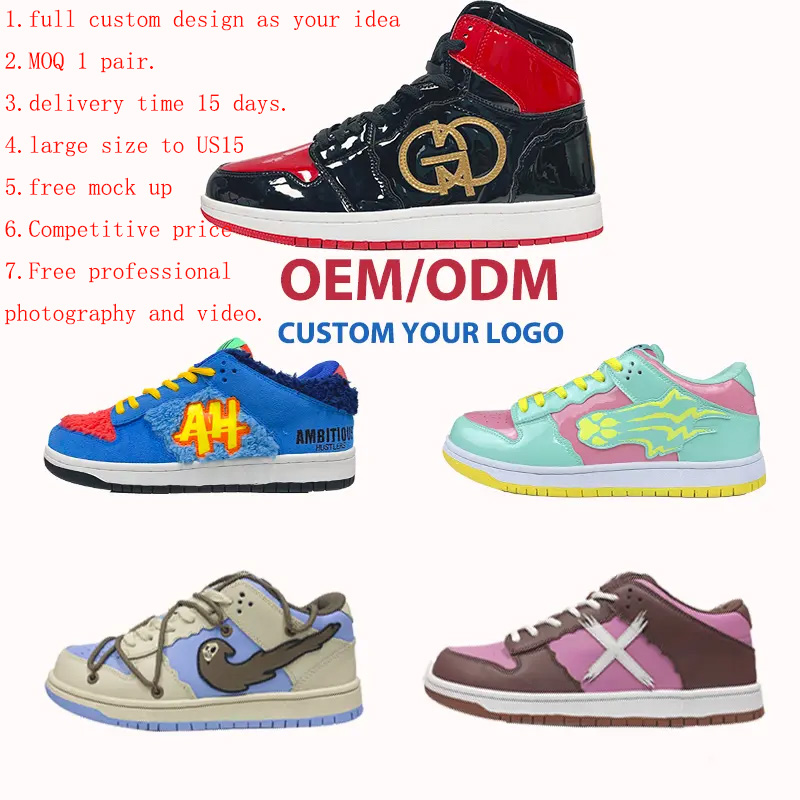
ANDY LUO
QUANZHOU HANTUO SHOES CO.,LTD.
EMAIL:andy1@hentoll.com
PHONE/WHATSAPP:+8615106092217
Website: www.hentoll.com
by "sales14" <sales14@hentol1314.com> - 01:42 - 4 Apr 2025 -
Wealth requires health
The Shortlist
Emerging ideas for leaders Curated by Alex Panas, global leader of industries, & Axel Karlsson, global leader of functional practices and growth platforms
Welcome to the CEO Shortlist, a biweekly newsletter of our best ideas for the C-suite. This week, we examine what health means for CEOs and their employees. You can reach us with thoughts, ideas, and health tips at Alex_Panas@McKinsey.com and Axel_Karlsson@McKinsey.com. Thank you, as ever.
—Alex and Axel
Healthy leaders. Most CEOs got to where they are through a focused approach to hard work. But our latest research shows that personal health is more important than long hours. We asked more than 100 leaders of companies around the world about the daily routines that keep them effective in their roles. Six categories of mindsets and practices emerged. Staying healthy on these six dimensions is a prerequisite for high performance.
Healthy employees. Employee health means much more than physical safety in the workplace, says Lucy Pérez, McKinsey senior partner and global leader of the McKinsey Health Institute. Holistic health means mental, social, and emotional well-being. And, as with all kinds of health, prevention is key. Learn how to advocate for your employees—and yourself—in our latest article.
We hope you find these ideas novel and insightful. See you in a couple weeks with more McKinsey ideas for the CEO and others in the C-suite.Share these insights
This email contains information about McKinsey’s research, insights, services, or events. By opening our emails or clicking on links, you agree to our use of cookies and web tracking technology. For more information on how we use and protect your information, please review our privacy policy.
You received this email because you subscribed to The CEO Shortlist newsletter.
Copyright © 2025 | McKinsey & Company, 3 World Trade Center, 175 Greenwich Street, New York, NY 10007
by "McKinsey CEO Shortlist" <publishing@email.mckinsey.com> - 04:44 - 4 Apr 2025 -
PLASTIC INJECTION MOLDING: ROBUST PROCESS DEVELOPMENT & SCIENTIFIC MOLDING (23 & 24 April 2025)
CLICK HERE TO DOWNLOAD BROCHURE
Please call 012-588 2728
email to pearl-otc@outlook.com
HYBRID PUBLIC PROGRAM
PLASTIC INJECTION MOLDING:
ROBUST PROCESS DEVELOPMENT & SCIENTIFIC MOLDING
(** Choose either Zoom OR Physical Session)
Remote Online Training (Via Zoom) &
Wyndham Grand Bangsar Kuala Lumpur Hotel (Physical)
(SBL Khas / HRD Corp Claimable Course)
Date : 23 Apr 2025 (Wed) | 9am – 5pm By Selvaraj
24 Apr 2025 (Thu) | 9am – 5pm . .
INTRODUCTION:
Scientific Injection Molding is typically used in the production of complex parts and components where small variations in molding variables can severely impact the process or finished product. Therefore, the goal of Scientific Injection Molding is twofold:
1. Develop a process that produces repeatable results with minimal variation.
2. Optimize dimensional or mechanical characteristics of a molded part.
When developing a molding process using Scientific Injection Molding, key inputs such as time (fill, pack/hold, etc.), temperature (melt, barrel, etc.), and pressure (hydraulic, injection melt, cavity, etc.) are meticulously monitored, adjusted, and controlled, to ensure that process robustness is achieved, and a good part is consistently produced. A process can be robust or on the other hand must be changed frequently. A robust process ensures repeatability and a wide processing window for better quality & cost.
COURSE OBJECTIVES:
1. Material properties that affect processing
2. The importance of drying
3. Explains specific rules for controlling the plastic during processing
4. Injection molding machine selection
5. Provides thorough overview of injection molding and troubleshooting techniques.
6. Exercise greater control over the molding process
7. Reduce rejects and scrap
8. Improve part quality
9. Increase productivity
10. Robust parameter optimization
INTENDED AUDIENCE:
This workshop has been designed for all Managers, Section Heads, Engineers and Senior Technicians who are involved in the process of Plastic Injection Molding and want to make their workplace more productive & optimized. Following groups of people will benefit from this training:
1. Tool makers
2. Manufacturing engineers
3. Production engineers
4. Any technical personnel involved with plastic injection moulded parts
METHODOLOGY:
1. Participants will inform the organizer their top 6 issues to be discussed during the Troubleshooting section.
2. Interactive and action based with personal examples.
3. Participants are strongly encouraged to prepare their statistical software of choice for DOE simulation.
PREREQUISITE:
Participants are expected to have a basic understanding in Plastic Injection Moulding with a minimum of 2 years’ experience.
OUTLINE OF WORKSHOP
DAY 1 (9.00am—5.00pm)
1. Handling Semi Crystalline & Amorphous Polymers
i. Shrinkage
ii. Mel temperature
iii. Mold filling speed
iv. Mold temperatures
v. Barrel Heat Profile
vi. Screw recovery speeds
vii. Nozzle temperature
viii. Cooling times
ix. Mechanical properties
x. Optical clarity
2. Plastic drying
i. Degradation
ii. Drying time
iii. Drying temperature
iv. Types of dryers
v. Moisture measurement
vi. Overdrying effect
3. Injection moulding machine selection
i. Clamp force
ii. Machine platen size
iii. Shot size
iv. Screw diameter
v. Compression ratio
vi. Types of screws
vii. Check ring importance
DAY 2 (9.00am—5.00pm)
4. Process optimization
i. Optimization of injection phase
ii. Cavity balance
iii. Pressure drop
iv. Process window
v. Gate seal time
vi. Cooling time
vii. Screw speed & back pressure
5. Mold qualification flowchart
i. Mold qualification checklist
ii. Waterline diagrams
iii. Mold temperature maps
iv. Setup instructions
6. Mould cooling, venting & regrind management
i. Mould cooling
ii. Mould venting
iii. Regrind
7. DOE to develop robust injection molding parameters
8. Troubleshooting common issues at customer location
i. Short molding – consistent and inconsistent
ii. Flash
** Certificate of attendance will be awarded for those who completed the course
ABOUT THE FACILITATOR
Selvaraj is a highly qualified technical trainer in the areas of Continuous Improvement and Quality Excellence. He believes in interactive and fun filled training. His method of training is sharing rather than lecturing. With 23 years of experience in the field of Manufacturing Improvement & Quality Excellence covering areas of Design, Material Selection, Tooling, Machine & Process Engineering, Production and Supply Chain Management, Selvaraj B uses lots of real life examples. Selvaraj B started his career in 1989 as a Mechanical Engineer and in 23 years, has worked in 3 MNC companies that are World Class, i.e. Matsushita (Japanese), Robert Bosch (German) and Entegris (American) up to the level of an Operations Manager. Selvaraj B is a certified HRDF trainer. His strength is combining the intricacies and details of technical training with highly humorous anecdotes for maximum training effectiveness.
AMONG HIS NOTABLE ACHIEVEMENTS ARE:
1. Leading Gold Medal winning teams to NPC conventions – 1995 - 2002
2. Certified MTM and Ergonomics practitioner - 1997
3. Tooling & plastic parts design standardization - 2000
4. Awarded best Six Sigma Champion award in 2006 for promoting successful Sigma projects – 2006
5. Certified Trainer with Napoleon Hill International - 2007
6. Certified Lean Sigma Champion - 2010
7. Competent Communicator & Humorous Speech Division N Champion in Toastmasters International – 2012
8. Certified Six Sigma Master Black Belt - 2016
9. Member of the Society of Plastics Engineers
10. Member of the Institute of Engineers Malaysia
11. Certified NLP Practitioner - 2016
12. Certified VDI Quality Systems auditor - 1997
13. Certified Industry 4.0 Professional accredited by the US-based
International Institute of Executive Careers™ (IIEC)
AMONG HIS NOTABLE IMPROVEMENTS PROJECTS ARE:
1. Consolidating the Plastic Injection Moulding sections into 1 department & leading it – Bosch Bayan Lepas
2. Motivating and guiding numerous scrap reduction & quality improvement teams – Bosch Bayan Lepas, Automotive Lighting Bayan Lepas
3. Reduction of manufacturing lead time from 28 days to 3 days – Entegris
4. Cycle time reduction projects – Bosch, Entegris
5. Lean improvement projects – Signature Kitchen Sdn. Bhd. KL, Anshin Precision Sdn. Bhd. Shah Alam, Silverstone Berhad Taiping.
6. Starting a new factory of 200 headcount for Silicone Wafer Process Carrier comprising of Manufacturing, Maintenance, Engineering, Tooling, Production Planning & Continuous Improvement Department – Entegris Kulim Hi-Tech.
7. Guiding and inspiring numerous quality improvement and cost reduction teams to State level and National level competition and recognition.
8. Setting up & developing a World Class Manufacturing team for clean room fittings manufacturing – Entegris Kulim Hi-Tech
(HRD Corp/SBL Khas Claimable)
training Fee
14 hours Remote Online Training (Via Zoom)
RM 1,296.00/pax (excluded 8% SST)
2 days Face-to-Face Training (Physical Training at Hotel)
RM 2,250.00/pax (excluded 8% SST)
Group Registration: Register 3 participants from the same organization, the 4th participant is FREE.
(Buy 3 Get 1 Free) if Register before 11 April 2025. Please act fast to grab your favorite training program!We hope you find it informative and interesting and we look forward to seeing you soon.
Please act fast to grab your favorite training program! Please call 012-588 2728
or email to pearl-otc@outlook.com
Do forward this email to all your friends and colleagues who might be interested to attend these programs
If you would like to unsubscribe from our email list at any time, please simply reply to the e-mail and type Unsubscribe in the subject area.
We will remove your name from the list and you will not receive any additional e-mail
Thanks
Regards
Pearl
by "sump@otcmsb.com.my" <sump@otcmsb.com.my> - 02:21 - 4 Apr 2025 -
Economic mobility in rural America: A first look at new research
On McKinsey Perspectives
Characteristics of rural communities Brought to you by Alex Panas, global leader of industries, & Axel Karlsson, global leader of functional practices and growth platforms
Welcome to the latest edition of Only McKinsey Perspectives. We hope you find our insights useful. Let us know what you think at Alex_Panas@McKinsey.com and Axel_Karlsson@McKinsey.com.
—Alex and Axel
•
Economic growth engine. That rural America is facing an inevitable decline is more myth than reality. In fact, the areas outside of urban centers are growing, and rural American communities are important contributors to the broader US economy, McKinsey Senior Partner Shelley Stewart III and coauthors explain. McKinsey Institute for Economic Mobility analysis found that from 2010 to 2022, the GDP in rural counties increased 15% and median household income rose 43% to reach nearly $60,000 a year—a historic record.
—Edited by Belinda Yu, editor, Atlanta
This email contains information about McKinsey's research, insights, services, or events. By opening our emails or clicking on links, you agree to our use of cookies and web tracking technology. For more information on how we use and protect your information, please review our privacy policy.
You received this email because you subscribed to the Only McKinsey Perspectives newsletter, formerly known as Only McKinsey.
Copyright © 2025 | McKinsey & Company, 3 World Trade Center, 175 Greenwich Street, New York, NY 10007
by "Only McKinsey Perspectives" <publishing@email.mckinsey.com> - 11:05 - 3 Apr 2025




